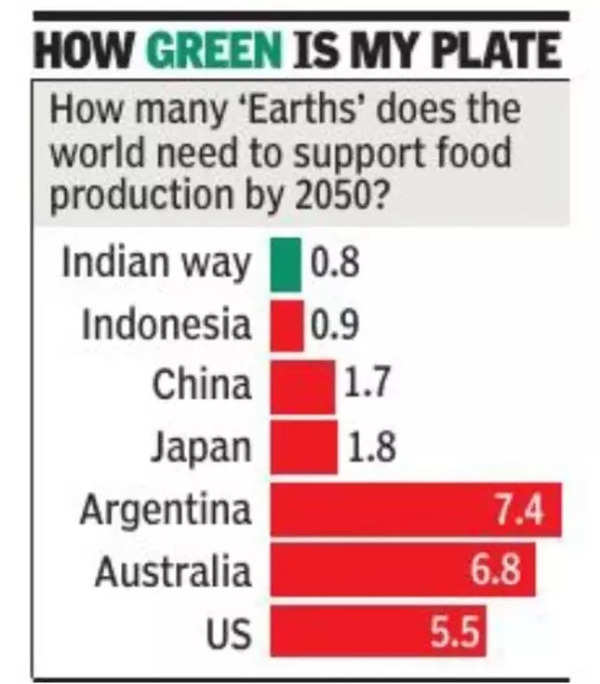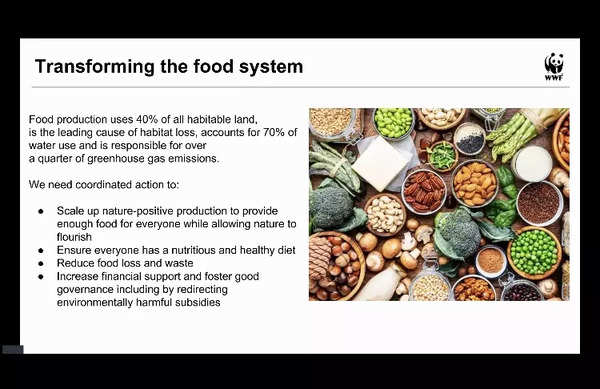India
The way Indians eat is best for the planet: WWF Living Planet Report – Times of India





“If everyone in the world were to adopt the current food consumption patterns of the world’s major economies by 2050, we would exceed the 1.5° Celsius (warming limit) climate target for food-related greenhouse gas emissions by 263 percent and need one to seven Earths to sustain us,” says the report, paying special attention to the Indian economy. millet mission.
The report points out that if all countries were to adopt India’s current consumption patterns, the world would need ‘less than one Earth’ (0.84) to support food production by 2050. The Indian scenario is even marginally better than the planetary climate limit for food, indicating the maximum amount of greenhouse gas emissions that food systems can emit to stay within 1.5° Celsius of the warming limit.
In contrast, the world will need the highest 7.4 Earths if it adopts Argentina’s consumption patterns. It means that Argentina has the worst system on a sustainable benchmark, followed by Australia (6.8), the US (5.5), Brazil (5.2), France (5), Italy (4.6), Canada (4.5) and the UK (3.9). Among the better countries, Indonesia (0.9) ranks only after India (0.84) and ahead of China (1.7), Japan (1.8) and Saudi Arabia (2).

The report also appreciated India’s continued efforts to promote climate-resilient millets (nutri-grains), saying that the National Millet Campaign is designed to increase national consumption of this age-old grain, which is good for health and highly resilient in the face of climate change.
“More food sustainable diets would reduce the amount of land needed to produce food: pasture in particular could be freed up for other purposes, including nature restoration and carbon sequestration,” the report said. It also highlights the importance of promoting healthy alternative protein sources such as legumes and food grains, plant-based meat alternatives and algae species with high nutritional value.





